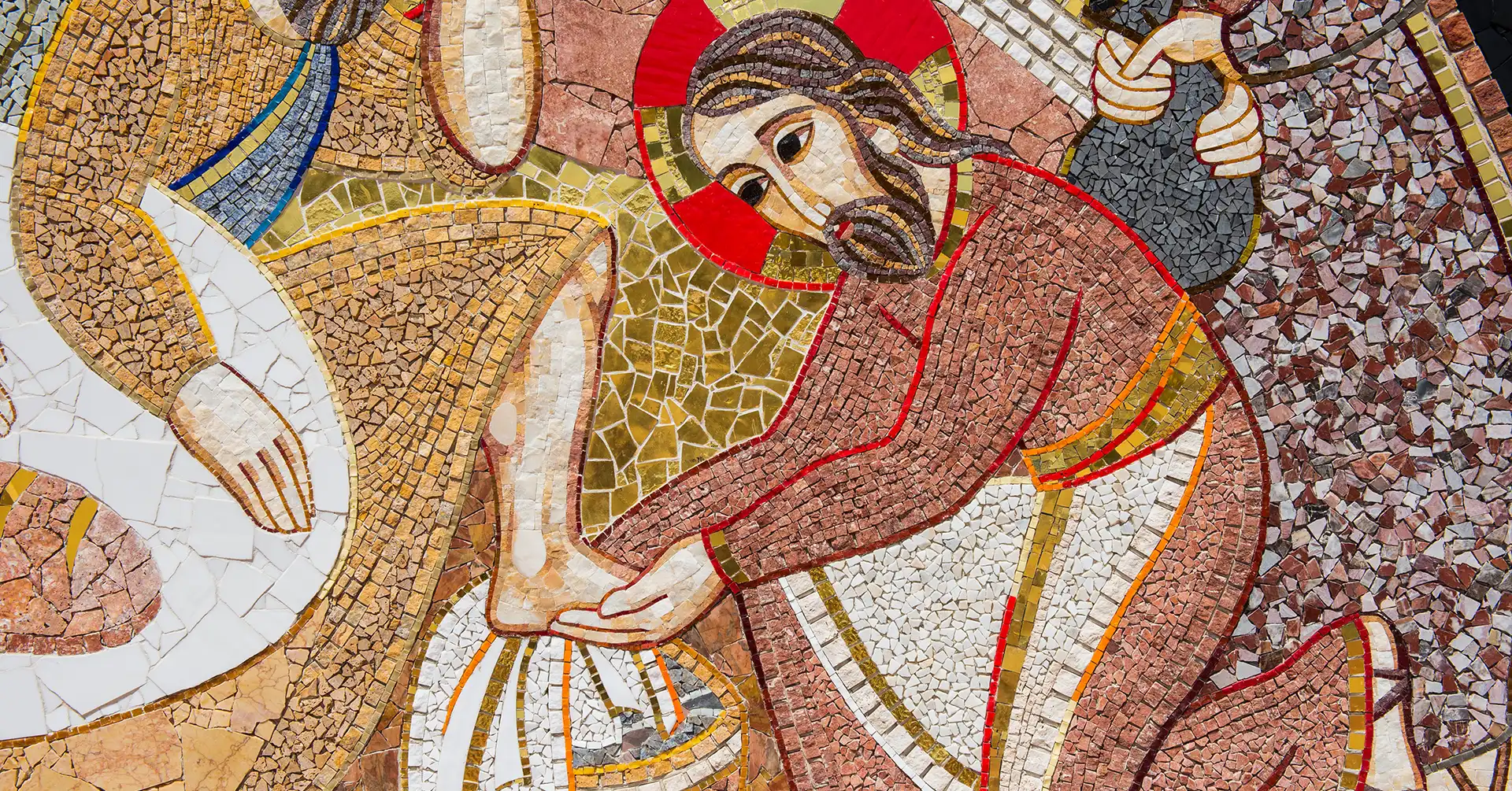Hello, my wonderful readers! Exploring the rich tapestry of Eastern Art offers a captivating journey into the cultural heritage of the Ancient Near East. From Mesopotamia’s majestic sculptures to Persia’s intricate pottery, Eastern Art reflects civilizations that thrived millennia ago. In this blog, the allure and significance of Eastern Art will be illuminated, shedding light on its historical context, artistic techniques, and enduring legacy. Delving into the realms of Sumerian, Babylonian, Assyrian, and Persian art, readers will uncover the stories etched in stone reliefs, the symbolism woven into textiles, and the mastery displayed in metalwork.
By delving into this vast and diverse artistic landscape, enthusiasts and scholars alike can gain a deeper appreciation for the creativity and ingenuity of ancient cultures. Join us as we embark on a journey to unravel the mysteries and marvels of Eastern Art, where every artifact serves as a testament to the ingenuity and creativity of humanity’s past civilizations.
Famous Eastern Art Explored
Exploring the world of Famous Eastern Art unveils a treasure trove of cultural riches spanning centuries and civilizations. From ancient Mesopotamia’s opulent palaces to the serene landscapes of traditional Japanese paintings, Eastern Art offers a diverse and captivating array of masterpieces. In this exploration, we delve into the intricacies and significance of renowned artworks from the East, each piece a testament to the creativity, spirituality, and craftsmanship of its respective culture.
The Great Sphinx of Giza:
Standing as a symbol of ancient Egypt’s grandeur, the Great Sphinx of Giza is a colossal limestone statue depicting a mythical creature with the body of a lion and the head of a human. Believed to have been constructed during the reign of Pharaoh Khafre in the 26th century BCE, this iconic sculpture embodies the mastery of Egyptian artistry and engineering prowess.
The Terracotta Army:
In the mausoleum of China’s first emperor, Qin Shi Huang, the Terracotta Army is a vast collection of life-sized clay soldiers, horses, and chariots buried to protect the emperor in the afterlife. This remarkable archaeological find dates back to the 3rd century BCE and offers invaluable insights into ancient Chinese military tactics, craftsmanship, and spiritual beliefs.
The Taj Mahal:
Renowned as one of the world’s most exquisite architectural marvels, the Taj Mahal stands as a testament to the enduring love of Mughal Emperor Shah Jahan for his wife, Mumtaz Mahal. Constructed in the 17th century in Agra, India, this majestic white marble mausoleum is adorned with intricate carvings, inlaid gemstones, and lush gardens, showcasing the pinnacle of Mughal art and Islamic architecture.
The Tale of Genji Scrolls:
Dating back to the 12th century, the Tale of Genji Scrolls is a series of illustrated narrative handscrolls depicting scenes from the classic Japanese novel “The Tale of Genji” by Murasaki Shikibu. Created during the Heian period, these exquisite scrolls glimpse ancient Japan’s courtly life, customs, and aesthetics, serving as invaluable cultural artifacts.
The Forbidden City:
Nestled in the heart of Beijing, China, the Forbidden City is a sprawling palace complex that served as the imperial residence of Chinese emperors for over five centuries. With its magnificent halls, pavilions, and courtyards adorned with intricate artwork and imperial treasures, the Forbidden City stands as a testament to the grandeur and power of China’s dynastic rulers.
Famous Eastern Art transcends mere aesthetics, offering profound insights into diverse civilizations’ beliefs, aspirations, and achievements throughout history. Through these masterpieces, we can appreciate the beauty of the past and gain a deeper understanding of the cultural legacies that continue to inspire and enrich our world today.
Why The Ancient Near East The Testament of Eastern Art?
The Ancient Near East is a testament to Eastern Art’s enduring legacy and significance. Spanning a vast region encompassing modern-day Mesopotamia, Persia, and the Levant, this cradle of civilization gave birth to some of the most iconic and influential artworks in history. Exploring why the Ancient Near East is the testament of Eastern Art reveals a convergence of cultural, artistic, and historical factors that have left an indelible mark on the world.
Historical Significance:
The Ancient Near East is pivotal in human history, serving as the birthplace of agriculture, writing, and organized societies. Cities such as Ur, Babylon, and Nineveh thrived as commerce, culture, and power centers, laying the foundation for developing complex civilizations. The artworks produced in this region reflect these ancient societies’ aspirations, beliefs, and achievements, providing invaluable insights into their daily lives, religious practices, and political structures.
Diverse Cultural Influences:
The Ancient Near East was a melting pot of diverse cultures, languages, and traditions, resulting in a rich tapestry of artistic expression. From the Sumerians’ monumental architecture to the Assyrians’ intricate metalwork, each civilization contributed its unique artistic styles and techniques to the broader artistic landscape. This cultural exchange fostered innovation and creativity, leading to the development of iconic artworks that continue to inspire awe and admiration today.
Symbolism and Mythology:
Eastern Art from the Ancient Near East is replete with symbolism and mythology, reflecting its creators’ spiritual beliefs and cosmological worldview. From the winged bulls of Assyrian palaces to the celestial motifs of Persian carpets, these artworks were imbued with layers of meaning and significance. Art often depicted mythological narratives, divine beings, and sacred rituals, reinforcing religious doctrines and social hierarchies while connecting the earthly realm with the divine.
Technological Advancements:
The artisans of the Ancient Near East were masters of their craft, utilizing advanced techniques and materials to create enduring masterpieces. These technological advancements revolutionized artistic production, from the invention of the potter’s wheel to the refinement of metallurgical processes. They paved the way for creating intricate ceramics, monumental sculptures, and exquisite jewelry. The legacy of these innovations continues to influence artistic practices and craftsmanship to this day.
Legacy and Influence:
The artistic legacy of the Ancient Near East continues to resonate across time and space, shaping the artistic traditions of subsequent civilizations and inspiring generations of artists, scholars, and enthusiasts. The geometric patterns of Mesopotamian pottery, the narrative reliefs of Assyrian palaces, and the lyrical poetry of Persian literature have all left an indelible mark on the cultural landscape of the Eastern world and beyond. Through studying and appreciating these artworks, we can better understand our shared human heritage and the enduring power of artistic expression.
The Ancient Near East is the testament of Eastern Art, embodying ancient civilizations’ creativity, spirituality, and ingenuity. From its historical significance and diverse cultural influences to its symbolic imagery and technological advancements, Eastern Art from this region continues to captivate and inspire audiences worldwide. By exploring the rich artistic legacy of the Ancient Near East, we can gain a deeper appreciation for the beauty and complexity of human creativity throughout the ages.
Importance of Eastern Art?
The importance of Eastern Art lies in its profound cultural, historical, and artistic significance, transcending boundaries and enriching the global artistic landscape. Through its diverse forms, techniques, and themes, Eastern Art offers invaluable insights into the traditions, beliefs, and achievements of the civilizations that have flourished in the East. Here’s a detailed exploration of why Eastern Art holds such paramount importance:
Preservation of Cultural Heritage:
Eastern Art serves as a custodian of cultural heritage, preserving diverse Eastern civilizations’ traditions, values, and customs across millennia. From the intricate calligraphy of Islamic manuscripts to the serene landscapes of traditional Chinese paintings, these artworks encapsulate the essence of their respective cultures, offering a window into the past for future generations to appreciate and learn from.
Expression of Identity and Beliefs:
Eastern Art provides a platform for expressing identity, spirituality, and worldview, allowing artists to communicate their beliefs, aspirations, and experiences through visual language. Whether through religious iconography, mythological symbolism, or socio-political commentary, Eastern artworks reflect the multifaceted nature of Eastern societies, fostering a deeper understanding and appreciation of their cultural complexities.
Cross-Cultural Exchange:
Eastern Art has historically catalyzed cross-cultural exchange, facilitating dialogue, trade, and collaboration between Eastern and Western civilizations. From the Silk Road to the Spice Trade, the exchange of artistic ideas, materials, and techniques has enriched both Eastern and Western artistic traditions, leading to hybrid styles and innovations that transcend geographical boundaries.
Promotion of Global Understanding:
By showcasing the diversity and richness of Eastern cultures, Eastern Art promotes global understanding and appreciation, fostering empathy, respect, and dialogue among people of different backgrounds. Eastern Art provides a cultural exchange and education medium through exhibitions, publications, and digital platforms, bridging the gap between East and West and fostering a more interconnected and inclusive world.
Inspiration for Creativity and Innovation:
Eastern Art has long inspired artists, designers, and innovators worldwide, influencing diverse fields such as architecture, fashion, and technology. From the geometric patterns of Islamic architecture to the Zen aesthetics of Japanese minimalism, Eastern Art offers a wealth of creative inspiration and aesthetic principles that continue to inform contemporary artistic practices and design sensibilities.
Reflection of Universal Human Experience:
At its core, Eastern Art reflects the universal human experience, transcending linguistic, cultural, and temporal barriers to evoke emotions, provoke thought, and inspire wonder. Whether through the portrayal of love, loss, joy, or suffering, Eastern artworks resonate with audiences on a fundamental level, reminding us of our shared humanity and the enduring power of artistic expression to transcend the boundaries of time and space.
The importance of Eastern Art cannot be overstated, as it serves as a repository of cultural heritage, a catalyst for cross-cultural exchange, a promoter of global understanding, and a source of inspiration for creativity and innovation. By celebrating and preserving Eastern Art, we honor the rich tapestry of human diversity and creativity that enriches our world.
Conclusion
Exploring Ancient Near East Art unveils a rich tapestry of Eastern Artistry that transcends time and borders. From the majestic sculptures of Mesopotamia to the intricate pottery of Persia, each artifact serves as a testament to the enduring legacy and significance of Eastern Art.
Through the lens of historical significance, enthusiasts gain insights into the pivotal role of Eastern civilizations in shaping human history. Diverse cultural influences have fostered artistic innovation, creating iconic masterpieces that inspire awe and admiration. Symbolism and mythology imbue Eastern Art with layers of meaning, reflecting spiritual beliefs and cultural values.
Moreover, technological advancements have revolutionized artistic production, enabling artisans to craft intricate works of unparalleled beauty. The legacy of Eastern Art resonates across time and space, shaping the artistic traditions of subsequent civilizations and inspiring generations of artists and scholars.
Ultimately, the study and appreciation of Eastern Art offer a profound glimpse into ancient cultures’ creativity, spirituality, and ingenuity. As we continue to explore and celebrate Eastern Art, we honor the rich cultural heritage that enriches our world and connects us to our shared humanity.
Read More:






